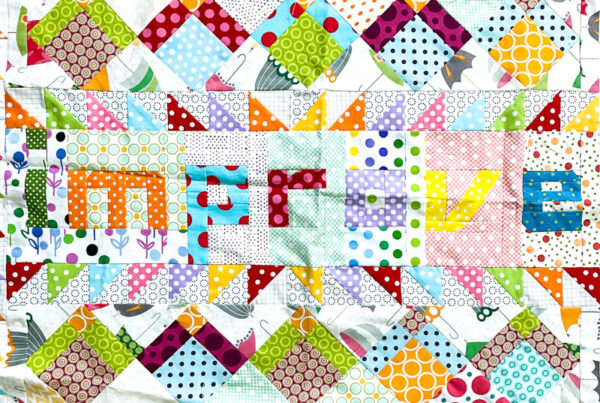
In his book Steal Like an Artist, Austin Kleon shares that art in all it’s forms is a remix of past art. That a good artist pulls from many to create an unique look of there own. I once took my great grandmother’s traditional quilting design and made my own modern quilt. It was a fun way to connect with her. Today I would like to focus on drawing inspiration from our sister quilters of the past to create modern quilts that reflect your own personal style.
One way to draw from the past is to look at traditional patterns. This is one of my favorite ways to play and come up with designs. I have played with this method with the classic rail fence block. See how I mixed it up and the possibilities I found in this blog post. My popular Gradation is another take on the traditional rail fence quilt block.

Another block I’ve used this with is the majestic mountain block. Rhythm & Blues uses these blocks to create a funky rhythm though the quilt. While The same block spins around a center square in Dahlia. And Mountain Home uses the blocks in a more traditional setting.
Another way to take a modern spin on tradition is to play with the colors used in the quilt. Instead of a traditional cream or beige background I like to use gray. I’ve also experimented with red, as in Gathering and green in Treasures. If you are looking for help in choosing backgrounds you may enjoy this post. Playing with value is another way to give your quilt a modern feel. This post shares how you can create great quilts using only one color.

Scale is another way modern quilters change things up from traditional quilters. Try using a large print where a small scale print has been used in the past. Citrus Spin is an example of this method.

Or try using negative space. This flying geese runner, found in my Crumb Quilts book. Shows how affective this method can be.
In conclusion, traditional quilting can be a rich source of inspiration for modern quilters. By reinterpreting traditional patterns, experimenting with color and scale, and embracing negative space, you can create a quilt that is both timeless and contemporary.






